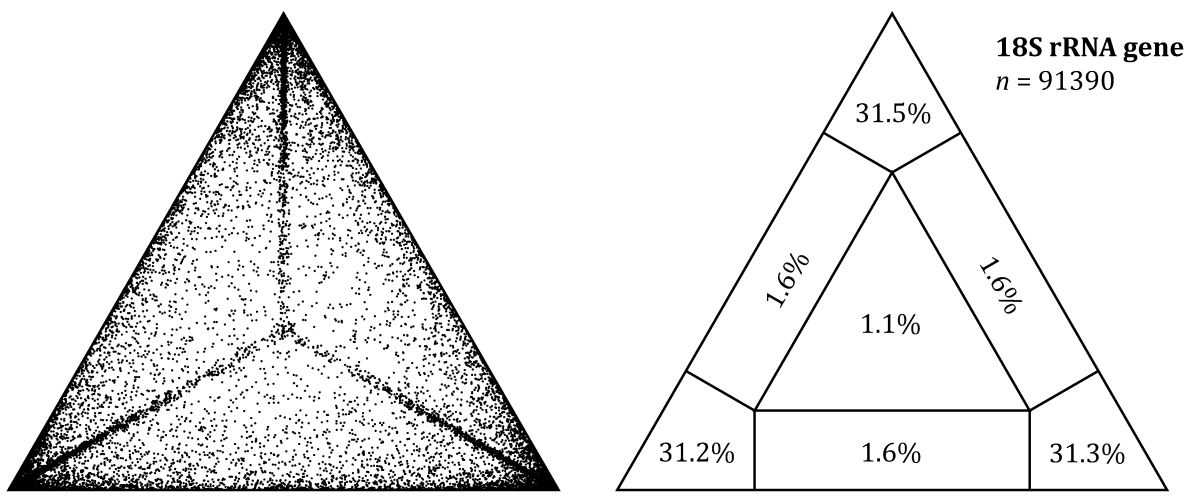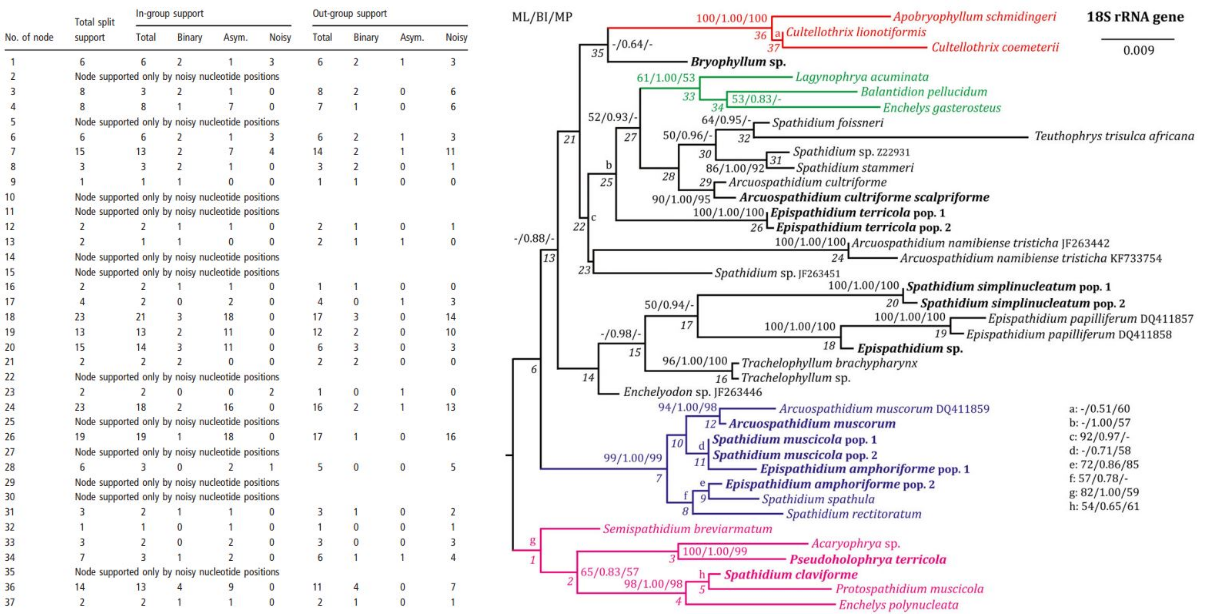Conflict between traditional morphological and modern molecular classifications
Despite the remarkable progress in molecular phylogenetic research, some parts of the phylogenetic tree of life remain unresolved—for instance, the internal phylogenetic relationships of the predatory ciliates from the order Spathidiida. The recent phylogenetic studies opened Pandora's box full of discrepancies between traditional morphological and modern molecular classifications of spathidiids. To find out what might be responsible for these discrepancies, we examined the phylogenetic informativeness of the macronuclear rRNA locus.
Quartet mapping showed that the macronuclear rRNA locus carries information to resolve the evolutionary relationships of this lineage.

Figure 1. Quartet likelihood mapping showing distribution of phylogenetic signal in the 18S rRNA gene. The corners of the triangles show the percentage of fully resolved trees, i.e. phylogenetically informative signal. The rectangular areas show the percentage of trees that are in conflict. The central triangle shows the percentage of unresolved star-like trees, i.e. phylogenetically uninformative signal.
Still, based on split-spectrum analysis, we found that this locus contains only a small number of informative nucleotide positions.

Figure 2. Number of split-supporting nucleotide positions for the 18S rRNA gene that are mapped on the ML tree. Numbers in italics below nodes refer to numbers of nodes in split spectrum analysis provided in the table.
Using diversification analyses and γ-statistics, we offer a possible reason for this complicated situation: the spathidiids encountered one or more rapid radiations in the Paleozoic and a later gradual extinction event that began in the Mesozoic and has lasted until today.

Figure 3. (A) Chronogram showing posterior means of divergence times of 40 spathidiid taxa obtained with the Bayesian molecular dating. (B) Log-lineage-through-time (LTT) plot inferred from chronogram shown in A (left). There were two diversification rate slowdowns at 217.31 and 45.89 My. Horizontal axes represent the time scale in My.
This means that the rapid radiations did not allow fixing a sufficient number of molecular synapomorphies. Moreover, the extinctions caused the loss of numerous taxa that could shed light on the intricate relationships of spathidiids. The information from morphologically conserved cellular structures or/and phylogenomic data could help in this complex situation.